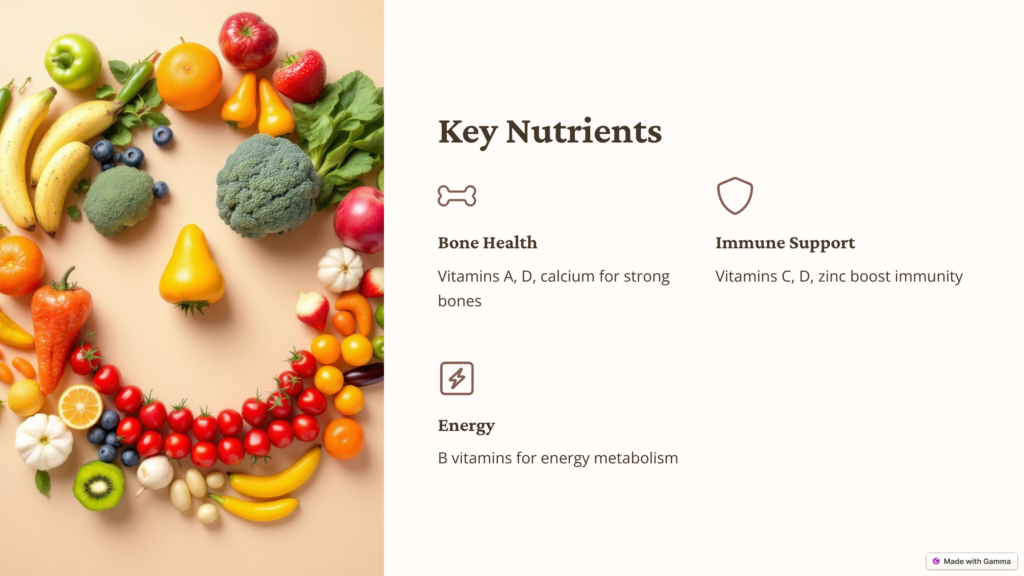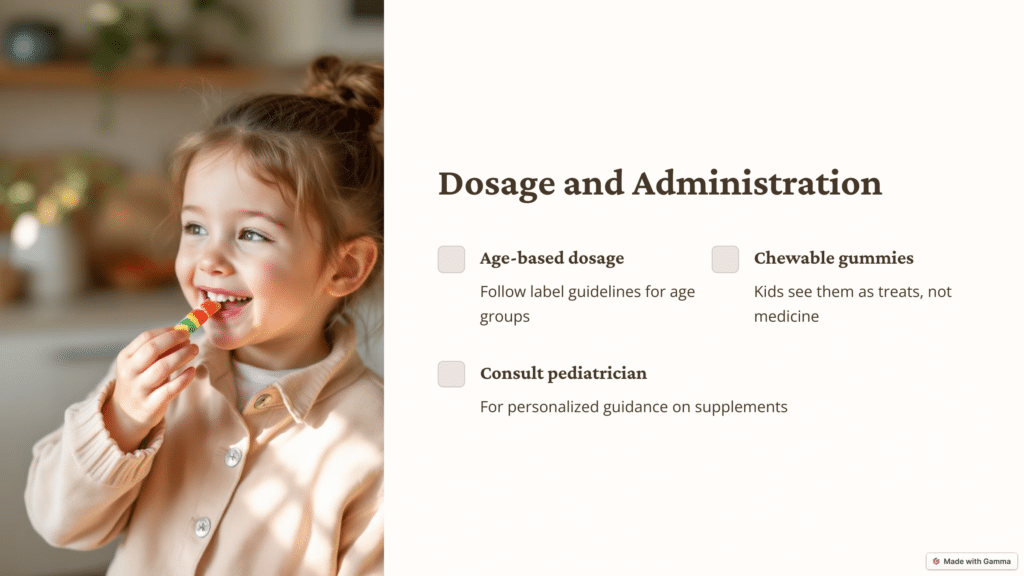
Children’s MultiVitamin
📌 Key Nutrients in Children’s Multivitamin

When picking a children’s multivitamin, I focus on core vitamins and minerals. Vitamins A, C, and D, along with crucial minerals like calcium and iron, are fundamental for bone growth, immune function, and overall wellbeing. In my household, vitamin C has been particularly helpful in reducing the frequency of colds. Additionally, vitamin D is critical for maintaining healthy bones, especially if kids don’t get enough sunlight. Some multivitamins also include B vitamins for energy metabolism and zinc for immune support.
I’ve noticed that some brands include extra ingredients like probiotics or omega-3 fatty acids. While these can be beneficial, always read labels carefully to ensure the product meets your child’s specific needs. Remember, more doesn’t automatically mean better. Sticking to reputable brands that use scientifically backed formulations is a good rule of thumb.
💊 Dosage and Administration Tips

From my experience, the childeren’s multivitamin dosage often depends on the child’s age and dietary habits. If your child is a picky eater, a balanced multivitamin can fill nutritional gaps. But if they already eat a wide variety of foods, you may opt for a simpler formulation. I personally prefer chewable gummies for my kids because they see them as a treat rather than “medicine.” This reduces any mealtime battles.
Most children’s multivitamin labels provide recommended dosages based on age groups, like 2-3 years or 4+ years. Always follow these guidelines, and if you’re unsure, consult with your pediatrician. Taking more than the recommended dose can lead to vitamin toxicity, which can be as harmful as a deficiency when it comes to fat-soluble vitamins (A, D, E, K).
🔎 How to Choose Quality Children’s Multivitamin

- Third-party testing: Look for seals from organizations like USP or NSF.
- Reputable brands: Ensure the company has a history of quality and transparency.
- Minimal additives: Avoid products loaded with artificial sweeteners or colors.
- Sugar content: Watch out for excessive sugar in gummy vitamins.
- Allergen considerations: Some supplements contain common allergens like soy or dairy.
When I first started researching children’s multivitamins, I realized that not all products are created equal. Some brands rely on marketing buzzwords, so it’s always wise to check the ingredient list and see if the vitamin forms are well-absorbed. For example, certain forms of iron (like ferrous fumarate) may be gentler on the stomach than alternatives.
📊 Backed by Research
A 2021 review in the American Journal of Clinical Nutrition suggests that children with limited dietary diversitybenefit most from regular multivitamin use. In my personal circle, I’ve noticed parents feeling relieved knowing that a quality supplement can fill potential nutritional gaps. However, multivitamins are never a substitute for whole foods. Fresh fruits, vegetables, proteins, and healthy fats should remain at the core of a child’s diet.
🏁 Conclusion
Deciding on a children’s multivitamin can be daunting, but once you focus on reputable brands, age-appropriate dosages, and balanced nutrition, you’re already on the right track. As a dad who works in the pharmaceutical sector, I’ve seen firsthand how the right supplement, combined with a nutritious diet, sets the stage for healthy growth and development. Always remember to consult with a pediatrician for personalized guidance.
In the end, the goal is to ensure your children grow up strong and healthy. A well-chosen multivitamin can be part of that solution, especially if your child is going through picky-eating phases or dealing with dietary restrictions.
❓ Q&A
Q1: Can children take adult multivitamins in smaller doses?
A: In most cases, it’s best to use products specifically formulated for children. Adult vitamins may contain higher amounts of certain nutrients that could be unsafe for kids.
Q2: What if my child refuses to take multivitamins?
A: Try different forms, like gummies or liquids. You can also involve them in picking flavors or reward them with stickers to create a positive association.
Q3: Should I give my child a multivitamin every single day?
A: Generally, yes—consistency ensures steady nutrient intake. However, check with your pediatrician if you have concerns about daily use.
Q4: Is extra iron necessary in a children’s multivitamin?
A: It depends on your child’s diet. If they eat ironsourced foods (like lean meats, beans, fortified cereals), additional iron may not be necessary. Always verify through a blood test, if uncertain.
Q5: Do multivitamins cause side effects?
A: Mild side effects like upset stomach can occur but are usually rare. Follow dosage guidelines and consult a medical professional if side effects persist.



2 thoughts on “Children’s Multivitamin”